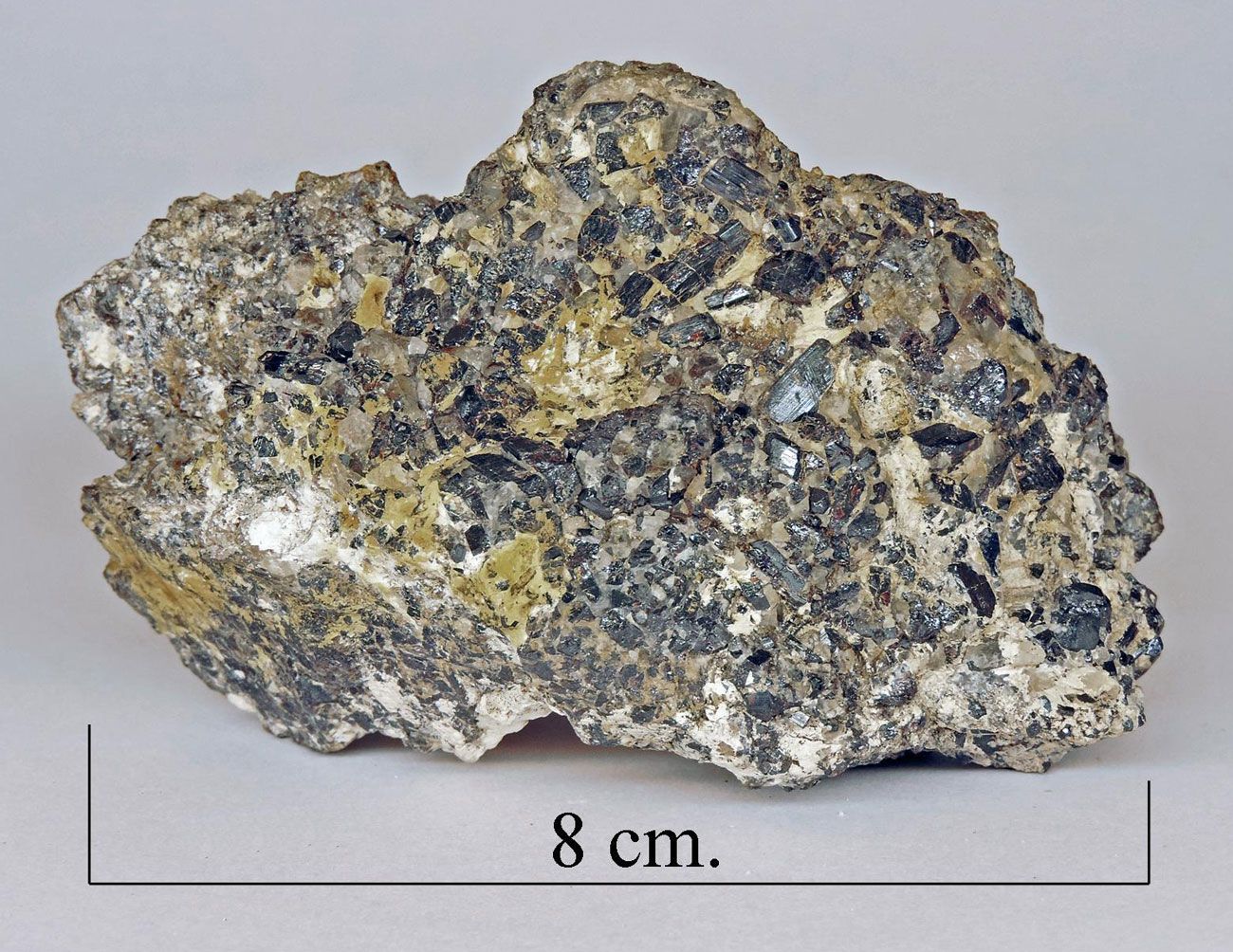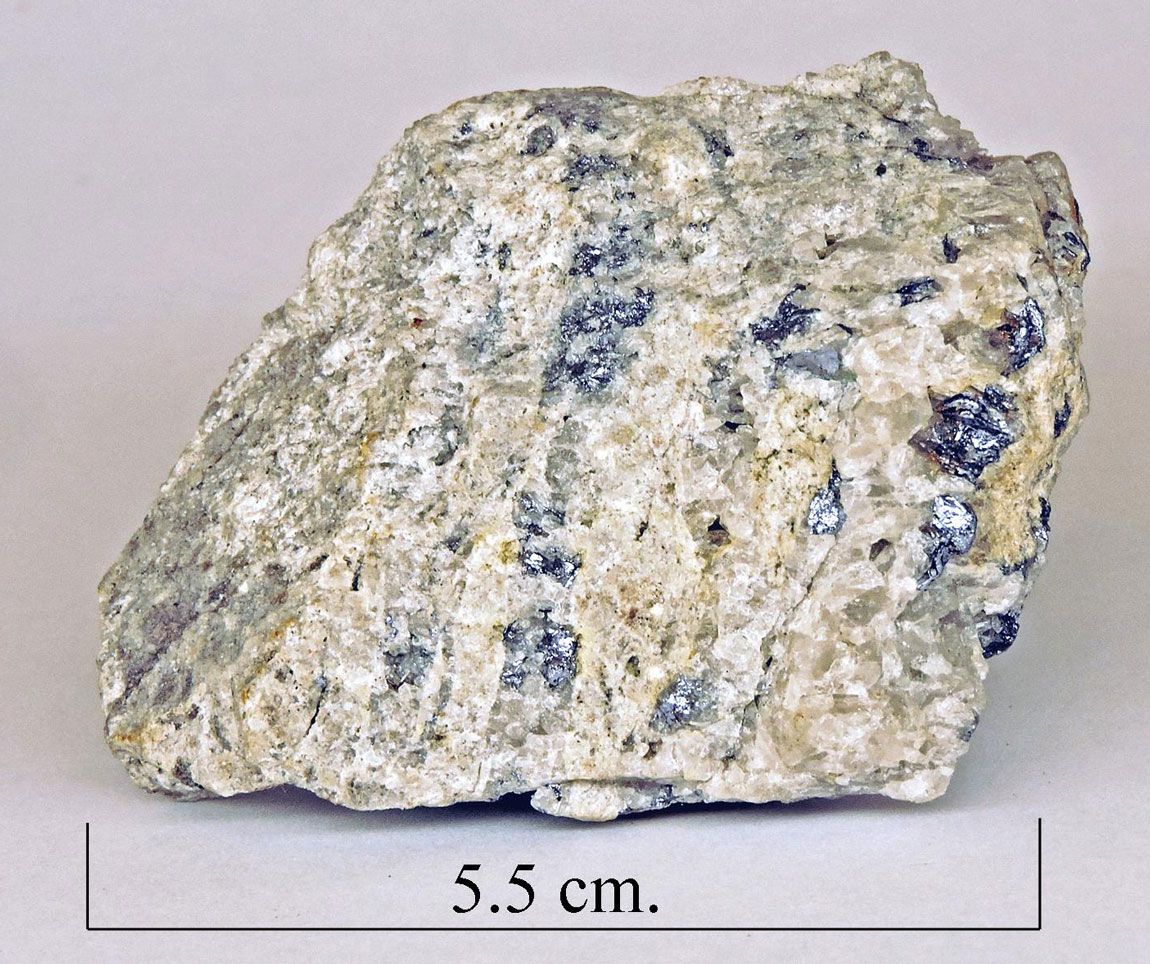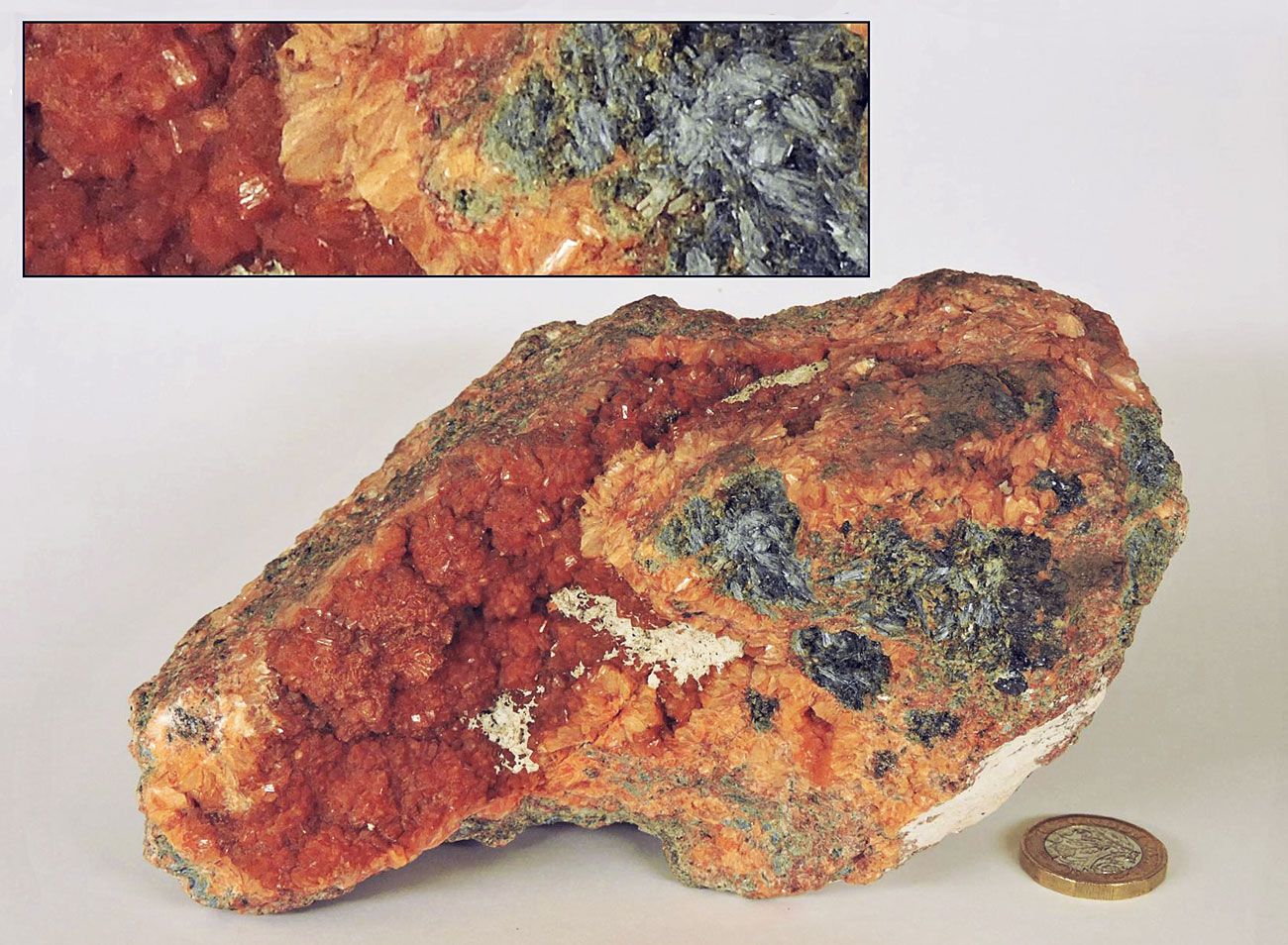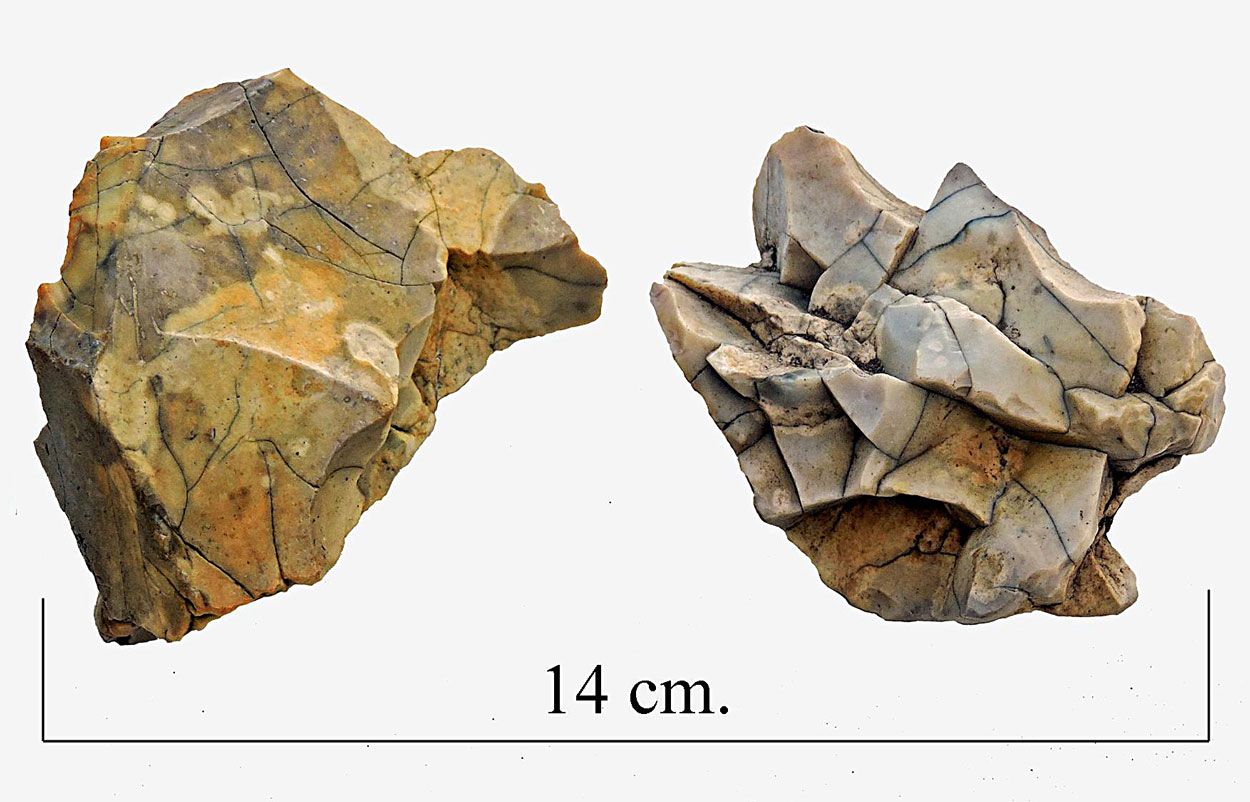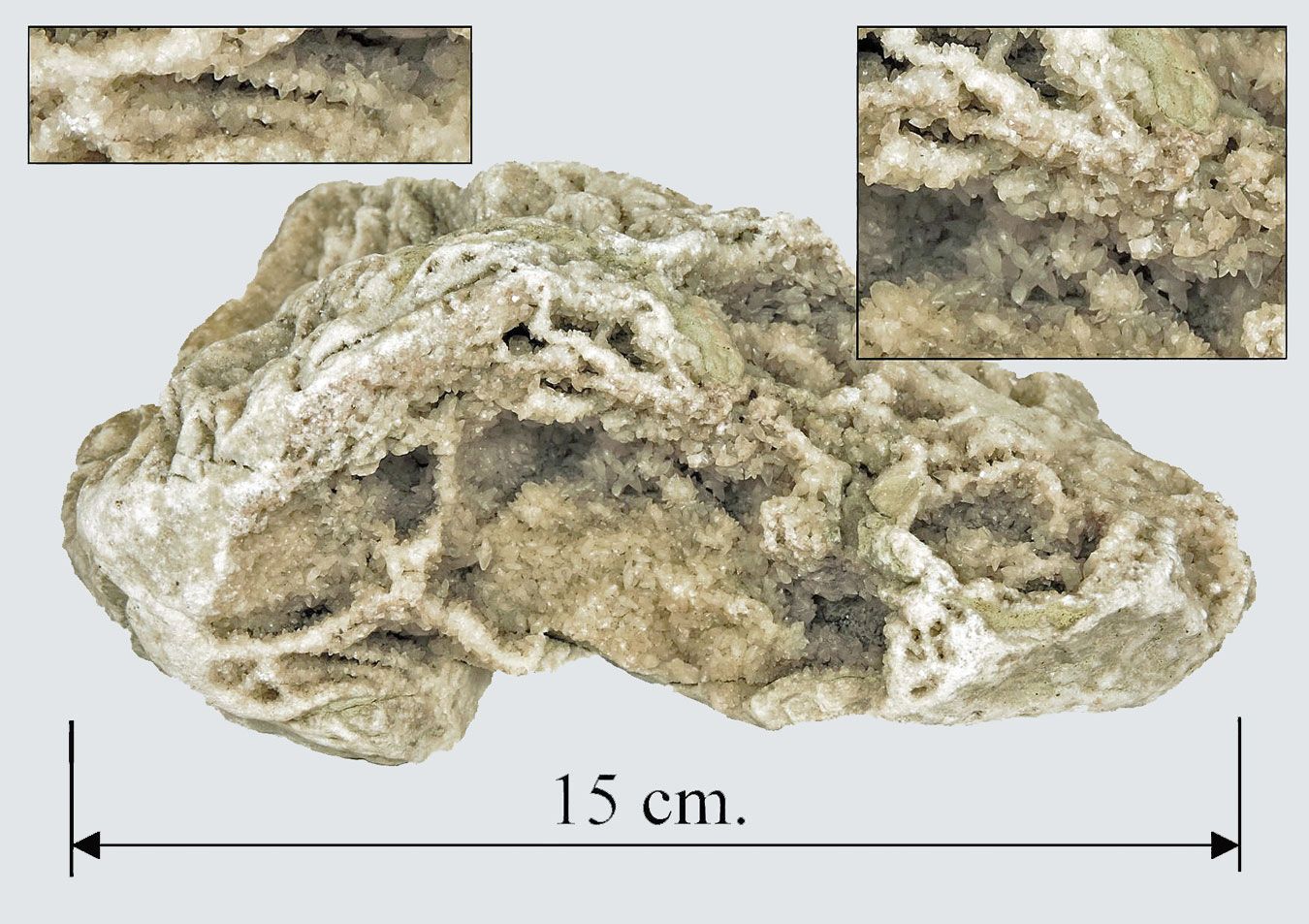
Gypsum, altered.
Gypsum (CaSO4.2H2O) calcium sulfate dihydrate is an evaporite mineral which can ocurr in many different colours, and crystal habits. The most common colour is white or off white, and the most common crystal habit is in the form of selenite. This specimen collected from Barry harbour in South Wales in 2010. was lying on the beach, hence the light covering of algae. It has come from bands in the red marls in the cliff face. The original nodule has been altered by water passing through the rocks, which has left this crenulated specimen with nearly all the exposed surfaces coated with an alteration product of small scalenahedral crystals of calcite.
